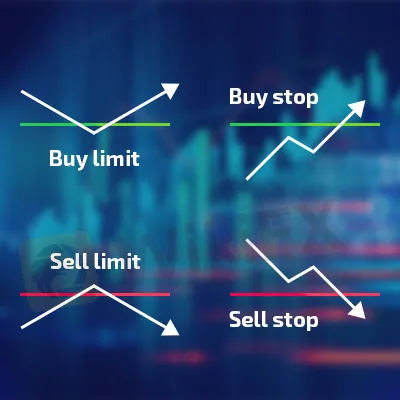简体中文
繁體中文
English
Pусский
日本語
ภาษาไทย
Tiếng Việt
Bahasa Indonesia
Español
हिन्दी
Filippiiniläinen
Français
Deutsch
Português
Türkçe
한국어
العربية
In Forex, what is a Pending Order?
Abstract:When we initially begin trading Forex, we frequently use a "market order" to enter the market. To participate, simply click the button to purchase or sell. The market order informs the broker that you wish to participate at the greatest available price, or the "market price." There's no assurance that you'll obtain the price shown on the chart or in the order window, but because Forex is so liquid, it usually works out.

When we initially begin trading Forex, we frequently use a “market order” to enter the market. To participate, simply click the button to purchase or sell. The market order informs the broker that you wish to participate at the greatest available price, or the “market price.” There's no assurance that you'll obtain the price shown on the chart or in the order window, but because Forex is so liquid, it usually works out.
Pending Orders
Pending orders in Forex, or any other market, are a set of instructions you provide your broker when you want to enter or leave a position. Multiple actions can be performed in the same order on more complicated systems. At its most basic level, you're considering a situation in which you inform the market you want to enter or exit a position at a specified price. Nothing occurs if the market does not reach that price. There are many different sorts of orders, but we'll focus on the most common ones.
Buy Stops
Simply put, a buy stop notifies the broker that you wish to buy a currency pair at a certain price. For example, if you are short the USD/CAD pair at 1.31 but realize you are mistaken if the market reaches the 1.3180 level, you set a buy stop at that level to safeguard your account. This implies you buy back the position as soon as the market reaches 1.3180, closing the trade and living to fight another day.
Sell Stops
Sell stops, on the other hand, are the polar opposite. You want to sell the market once a price is touched, usually to close out a trade. Let's imagine you're long the GBP/USD pair at 1.30 and the price has climbed all the way to the 1.33 level. You want to lock in some profits, so you set a sell stop at 1.3270, just below the current price. If the market returns to the 1.3270 level, you sell your position and flatten out your account, at least for that particular transaction.
Sell Limit
A buy limit order expresses your willingness to purchase a currency pair at a certain price or better. For instance, suppose you wanted to purchase the USD/JPY pair at 111.05, which is now cheaper than the market. As the market falls to the level of 111.05, you are only willing to buy it at that price, or better. It is possible to be filled for a lesser price since it is regarded “better,” although this happens infrequently, and usually only when there is a lot of slippage during the news event. If your target price isn't met, nothing happens. The position will cost you either 111.05 or less.

Disclaimer:
The views in this article only represent the author's personal views, and do not constitute investment advice on this platform. This platform does not guarantee the accuracy, completeness and timeliness of the information in the article, and will not be liable for any loss caused by the use of or reliance on the information in the article.
Read more

What Are The Top 5 Cryptocurrency Predictions For 2025?
Discover the top 5 cryptocurrency predictions for 2025, including Ethereum's rise, a potential bear market, meme coin struggles, and regulatory shifts.

Think Before You Click: Malaysian Loses RM240,000 to Investment Scam
A manager from Sibu, Malaysia, lost RM240,000 to a fraudulent investment scheme.

What Euro Investors Can't Afford to Miss
For euro investors, geopolitical factors, inflation data, and the European Central Bank's policy direction will determine the market trends over the next few months.

How Big is the Impact of the USD-JPY Rate Gap on the Yen?
The U.S. Federal Reserve's repeated rate cuts and the narrowing of the U.S.-Japan interest rate differential are now in sight. So, why is the U.S.-Japan interest rate differential so important for the yen’s safe-haven appeal, especially when global economic uncertainty rises?
WikiFX Broker
Latest News
Will Gold Break $2,625 Amid Fed Caution and Geopolitical Risks?
ECB Targets 2% Inflation as Medium-Term Goal
New Year, New Surge: Will Oil Prices Keep Rising?
PH SEC Issues Crypto Guidelines for Crypto-Asset Service Providers
FTX Chapter 11 Restructuring Plan Activated: $16 Billion to Be Distributed
Think Before You Click: Malaysian Loses RM240,000 to Investment Scam
Bithumb CEO Jailed and Fined Over Bribery Scheme in Token Listing Process
WikiFX Review: Something You Need to Know About Saxo
Is PGM Broker Reliable? Full Review
Terraform Labs Co-founder Do Kwon Extradited to the U.S. to Face Fraud Charges
Currency Calculator






